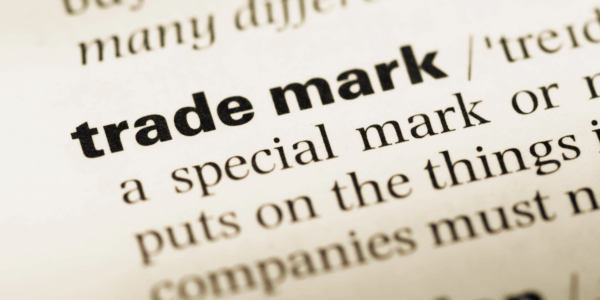Over the course of the last decade, corporate sustainability has swept across the UK business scene like a colossal tidal wave. Huge brands bend over backwards to prove to customers they’re shopping from businesses that care about the environment.
The UK Government has introduced new policies to bully business owners into cutting down on waste and companies of all shapes and sizes are being forced to compete for an increasingly environmentally-conscious target market of online-savvy millennials.
What does all that mean? It means that if you want your business to succeed in the long term, you need to have a serious think about sustainability and the ways in which your business could be negatively impacting the environment.
From the size of your company fleet of cars, to power saving measures or a cycle to work scheme, there are a million-and-one changes you could be making to your business in order to create a more eco-friendly culture that customers will absolutely love. But don’t forget that every little helps, and you shouldn’t get overly stressed trying to develop a huge strategy that will turn your start-up into Britain’s greenest business in the blink of an eye.
In fact, when in doubt, you should try to start with something small – and something that benefits you and your bottom line just as much as it helps the planet. So, what’s one of the best measures to try? First, try going paperless.
Going paperless helps the environment
You’ve probably already heard other business owners talk about trying to go paperless, and chances are organisations like banks and insurance firms you’ve been dealing with have contacted you at some point to explain to you why they’ve made similar moves. This is one instance when you should just go ahead and jump on the bandwagon.
First and foremost, going paperless helps to safeguard the natural environment.
According to researchers at Kyocera, the average UK office worker uses up to 45 pieces of paper every single day – but those same workers also admit to pollsters that around two-thirds of the paper that they’re printing off isn’t even actually used. If that sounds familiar, then why bother carrying on using paper like that? It goes without saying that it’s horrible for the environment.
Over the last 40 years, the use of paper worldwide has risen by over 400%. Because demands have continued to skyrocket, that means the rate of deforestation has increased rapidly, too. Trees play an absolutely crucial role in capturing and absorbing the harmful carbon dioxide emissions that deplete our ozone – and they also produce life-giving oxygen.
Bearing that in mind, it stands to reason that if you stop using paper, you’ll also be doing your tiny bit to scupper demand for it. More trees will remain, which is undeniably better for everybody.
Likewise, if you cut down on paper use, you’ll also be helping to cut down on pollution. Believe it or not, paper manufacturers are actually some of the world’s worst offenders where pollution is concerned. According to the Worldwatch Institute, producing just one tonne of paper emits more than 1.5 tonnes of carbon dioxide equivalent. That’s a whole lot of waste being produced for something that you’ll probably just end up throwing away later, anyway.
Paperless methods will also help decrease fuel consumed by transportation. Every time you post or send a printed document, someone needs to go out of their way to try and get it there. This increase in petrol will cost everybody money and emit more carbon into the air.
Believe it or not, by going paperless you’ll also save water. It takes a cup-and-a-half of water to make a single sheet of paper. Bearing in mind that fresh drinking water is becoming a huge concern in regions across the world, if you were to do your bit to stifle demand for paper production, that water could instead be utilised to safeguard entire populations.
That might all sound a bit sanctimonious and over the top, but it’s all true. By wasting loads of paper, your business is part of a wasteful machine that hurts the planet. If you were to cut your paper use by just 50%, you could make a real impact.
Going paperless makes good business sense
But you shouldn’t just go paperless because it’s good for the planet. It’s good for your bottom line, too.
First off, removing paper from your office can drastically increase the efficiency of your workers. According to one study conducted by the ILM Corporation, employees say they waste up to 30% of their time searching through paper. By moving all of your timesheets, invoice systems, and inventories online, time will be saved to ensure they’re able to get more work done.
Not only will your workers get more done without paper, but they’ll also make you more money. A recent study by Cisco found that multi-channel business operations that ditch old-school paperwork in favour of digital signage and more efficient, online customer delivery systems can bolster a company’s profitability by more than 15%. By investing in new software or training protocols for staff, you’ll be able to get rid of filing cabinets to free up space, lose the printers and save a fortune on ink.
Even little things like adopting a virtual signing platform could save you loads of money. To get you thinking about how much money you’re wasting on paper and ink, you should check out DocuSign’s paperless calculator.
Axing paper from your company processes could also keep your tax payments down. In the UK, there are environmental taxes designed to encourage companies to operate in more environmentally friendly ways. These taxes are generally designed to push larger businesses into marginalising the ways in which they’re impacting the planet – but if you plan on growing to become a big business in the future, it’s worth mitigating these threats now.
For reference, you can expect to receive reliefs or exemptions from the UK Government’s green taxes if:
- You use a lot of energy because of the nature of your business.
- You’re a small business that doesn’t use a lot of energy.
- You buy energy-efficient technology for your business.
Finally, going paperless is great from a branding perspective. According to researchers at Horizon Media, 80% of millennials say they expect companies to make a public commitment towards good citizenship. Not only that, but 73% of millennials are also willing to pay more for products and services they deem to be more sustainable.
So, by going paperless and communicating that to consumers, you should be able to attract more consumers than ever before – and if they deem your products worthwhile, you could even up your price points because of the environmental commitments you’ve made.
What tools can you use to help your company go paperless?
Okay, so you know why you should try to make your company go paperless – but how can you actually do it in practice?
The truth is, there are loads of different things you could be doing to decrease your paper use. But, if you need help with ideas, here are five of the most effective ways UK company owners have gone paperless:
Adopt a file-syncing service
Does your company rely on lots of documents that need to be called up by multiple team members? For example, you might have lots of client contracts that need to be close-at-hand, or lengthy policy documents for all of your customer service agents.
Well, by adopting a file-syncing service, you can ensure that all relevant team members have 24/7 access to all the documents they need – without printing off a single item.
Tools like Google Drive and Dropbox enable you to share documents that can be stored on a central cloud platform and edited by multiple people at the same time – from anywhere. That means you can have working documents called up in offices across the country, and alter permissions to team members only see what you want them to see.
Start using e-signatures
Does your company rely on the signing of contracts and documents to keep things up and running? Well, you could increase your signature speed and totally cut paper out of the equation by taking on a piece of software that comes with an e-signature function.
There are plenty of signature-specific platforms out there, but if you’re looking for an all-in-one solution that also enables you to sift through and edit documents, Adobe Acrobat is an affordable and effective option.
Download a scanning app
Another way of cutting down on paper and creating lots of copies is to download a scanning app. These work by utilising your smartphone’s camera and using it as a digital scanner – enabling you to automatically detect the document type you’re scanning, crop and send to whoever you need to.
If you’re new to scanning apps, one of the most accessible and intuitive apps is Evernote Scannable. All of the documents you scan with your phone will be super high-quality, and it comes with loads of sending options.
Start using some to-do apps
How much money do you and your team waste jotting down meeting notes and to-do lists in old-fashioned notebooks? By taking on a to-do app like todoist or Trello, you can say goodbye to those notebooks and say hello to rapid efficiency. With to-do apps, you can colour-code your action items based on priority and start a section for each team.
Users can even get set up and teams can chat about tasks and move them across a project timeline – creating a more interactive and engaging form way of working together online as a team.
Use a document delivery service
One reason that a lot of companies still love to use print document delivery services is because clients need to physically sign for something – proving to all parties involved that they received and looked at a document. When you email somebody an attachment, you don’t normally get the clarity. But with an online document delivery service, now you can.
Services like Dropbox and Hightail enable you to send huge files to clients, and then see when a person has looked at that file and then downloaded it. You can even set an expiration date on the access you’re handing them, so that individuals can only access a document for a certain period of time.
Pair that with your scanning app and e-signing platform, and there’s no need to ever print out a contract or important document ever again.
It goes without saying these aren’t the only ways your company could experiment with cutting back on its paper use. No two businesses are alike – and so the processes that work for you may not work for your next-door neighbour. Yet by tinkering with these five tools, you should definitely be able to slash the amount of printing you’re doing.
The bottom line
At the end of the day, you have nothing to lose by at least trying to go paperless. It’s good for the environment because it will help kerb demand – cutting back on deforestation, conserving water and reducing pollution. Better yet, it’s good for your company’s finances because it will make your employees more efficient, save you money and keep your UK taxes low.
Going paperless is also great for your image and from a branding perspective.
Best of all, there are plenty of ways to explore going paperless. So, what are you waiting for? Ditch the printer, get online and start saving money.
Please note that the information provided in this article is for general informational purposes only and does not constitute legal, tax, or professional advice. While our aim is that the content is accurate and up to date, it should not be relied upon as a substitute for tailored advice from qualified professionals. We strongly recommend that you seek independent legal and tax advice specific to your circumstances before acting on any information contained in this article. We accept no responsibility or liability for any loss or damage that may result from your reliance on the information provided in this article. Use of the information contained in this article is entirely at your own risk.






Join The Discussion